The Race For The Best Light-Powered Watch And The New Citizen Eco-Drive 365
Citizen introduces its latest Eco-Drive 365 models with a full year of power reserve on a single charge.

Back in 1957, Hamilton (then still an American watchmaker) launched the world’s first electric watch, the Electric 500. It was powered by a battery and never needed to be wound, and the movement was matched with the asymmetrical Ventura line that Elvis Presley made famous in his 1961 hit movie, Blue Hawaii. This was a transitional technology, however, that was flawed as battery life was relatively short and the watches were somewhat unreliable, making “old-school” windup counterparts more practical. It wasn’t an electric watch as we know them today as it still had a mechanical balance wheel and escapement. The mainspring was simply replaced by an electronic equivalent, but the future was knocking. And the future takes shape today, thanks to Citizen, with a watch with a 1-year power reserve on a single charge. Meet the new Citizen Eco-Drive 365 collection.
The Electric Future
We generally only cover mechanical watches at MONOCHROME, but sometimes technology is significant enough that it can’t be ignored. Certain quartz movements fall into this category, of course, like Citizen’s Calibre 0100, the most accurate wristwatch movement in the world (+/- 1 second per year). Light-powered movements are also a major advancement, eliminating battery waste and showcasing incredible levels of efficiency. Citizen is a true pioneer in this space and the first brand to introduce a commercially available light-powered analogue watch. Let’s step back some 50 years back for a minute and see how the brand first entered the electric arena, which ultimately led to today’s Eco-Drive.

Citizen introduced its own hybrid-electric watch that went head-to-head with Hamilton’s Ventura, the X8. It was a boon for the Japanese watch industry, which was looking for futuristic innovation, and it wasn’t long before Japan led the world with electric watches. Both the Ventura and X8 Cosmotron were predecessors to the industry-changing quartz movement, with the first commercially available quartz watch that was launched by Seiko in 1969. That watch, the Astron, forever disrupted watchmaking and almost destroyed the traditional, mechanical market. Known as the Quartz Crisis, the 1970s and 1980s saw many traditional mechanical watch brands fall into bankruptcy and disappear entirely. Not only were quartz movements cheap and very reliable, but they were also more accurate than their mechanical cousins. In fact, most were more accurate per month than mechanical watches were per day.

By 1976, Citizen was already producing quartz oscillators and took the technology to the next level with the first solar-powered analogue watch. This Crystron Solar Cell was meant to improve on the relatively short battery life of early quartz watches and prevent millions of batteries from being discarded. It was a time of new environmental awareness and due to a global oil crisis, also a time to explore new energy sources.

At first, the new tech was a bit flawed, unable to effectively harness indoor lighting and provide a practical power reserve. Citizen’s next generation in the 1980s saw big improvements with new solar cells sensitive enough for indoor lights and over a week of power reserve. Lithium-ion tech brought the power reserve to six months by 1995 and Eco-Drive was born.

The Power of Light
In the 1990s, batteries lasted for years in a typical quartz watch, so there wasn’t a cry for something better. It was also cheap and easy to change most batteries, so few gave it a second thought. Environmental concerns continued to fuel Japanese brands’ solar developments (and marketing departments). The brand estimates that if Eco-Drive had never been invented, all the batteries that would, as a result, have been thrown away every year would stack up to 8,400 meters in height! Its Eco-Drive tech was an industry leader and superior to standard solar watches. The light-sensitive cells became almost invisible behind the dial by 2002 with Eco-Drive VITRO, removing the visual tech that was falling out of style. Form was no longer tied to function and a wide variety of designs were introduced that were indistinguishable from standard quartz watches. Eco-Drive watches are now worn by people in 140 countries and regions around the world and they perfectly slot into today’s generation of environmental awareness.

Seiko, one of the precursors for quartz watches, wasn’t about to be sidelined and developed its own solar watch in 1977, a year after Citizen’s Crystron Solar Cell. Seiko’s calibre 4826 utilized twelve solar cells around the dial as a chapter ring, although the brand is better known for its Seiko KINETIC system that uses an oscillating weight to generate electrical energy (similar to a standard automatic movement). This was introduced in 1988 and its Spring Drive launched in 1999, which uses a mainspring and quartz simultaneously – the opposite of Hamilton’s early Ventura and Citizen’s X8 Cosmotron. Seiko, Casio and others produce a healthy collection of solar watches, but it’s Citizen’s Eco-Drive portfolio that dominates today’s light-powered market.
The New Citizen Eco-Drive 365
Citizen is introducing its latest Eco-Drive advancements with the new Calibre E365 further enhancing the advantages of Citizen’s Eco-Drive – low power consumption and long running times and that can hold an entire year of reserve on a full charge. There are three Eco-Drive 365 models coming soon with new designs (including a limited-edition piece) that are part of the brand’s Global Collection. The designs were inspired by a distinctive quartz watch from 1973, the Citizen Quartz EFA. The limited-edition model will feature lab-grown rubies that mimic the indices on the 1973 original.
Regular Series
The two standard models have a modern, stealthy look with one being blacked out entirely. This piece has a black ion-plated stainless steel case and bracelet, while the other model has the same black dial and bezel, but a conventional stainless steel case and bracelet. The cases have contemporary proportions at 42.5mm in diameter and 11.1mm in height, and both sport an unconventional shape highlighted by two angular sections at the top and bottom. The crown is also guarded as it integrates into the right side for a seamless aesthetic.
The black dials are dotted: 4 types of glittering accents with different colours and sizes were combined to create a surface reminding of a starry sky. These are paired with grey hands and applied indices. A colour-matching date window sits at 3 o’clock and the dial is protected by a sapphire crystal. Water resistance is rated at 100 metres.
Limited Edition
There’s also a cool vintage-inspired limited edition with design cues from the 1973 Citizen Quartz EFA. It shares the black dial, dimensions and water resistance of the regular models, but the hands and indices are now gold (coloured) with red lab-grown rubies at 12, 3, 6 and 9 o’clock. The outer bezel is also polished steel instead of black ion-plated, and the strap is brown LWG-certified calf leather that replaces the steel bracelet. All models are powered by the new Calibre E365 Eco-Drive with an accuracy of +/-15 seconds per month and a one-year power reserve.
Price & Availability
The two standard watches will retail at USD 530 for the all-black model and USD 480 for the black and steel, while the limited edition will retail at USD 875. All three will be available in Fall/Winter 2023. For more information, please visit Citizen’s websites here and here.


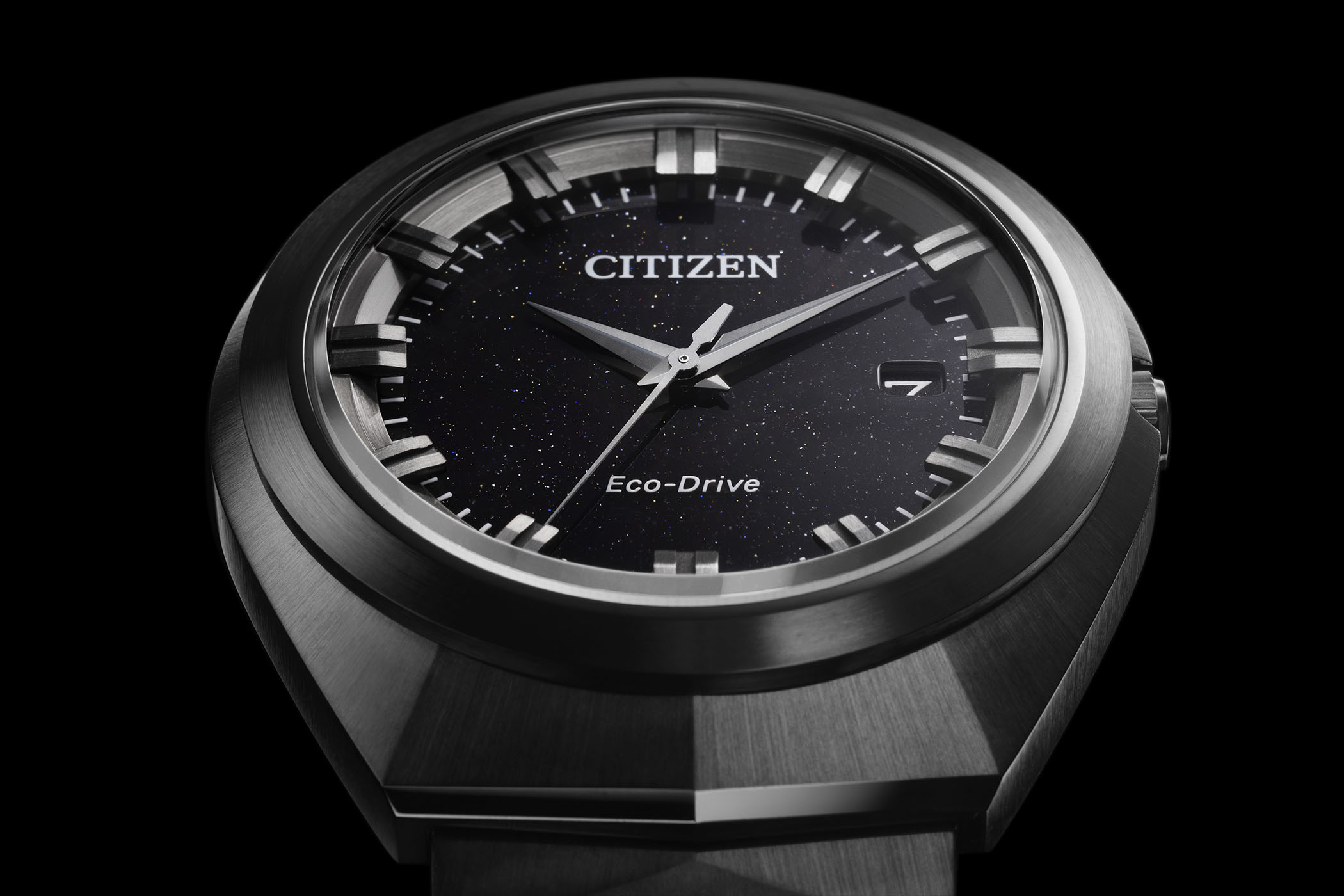
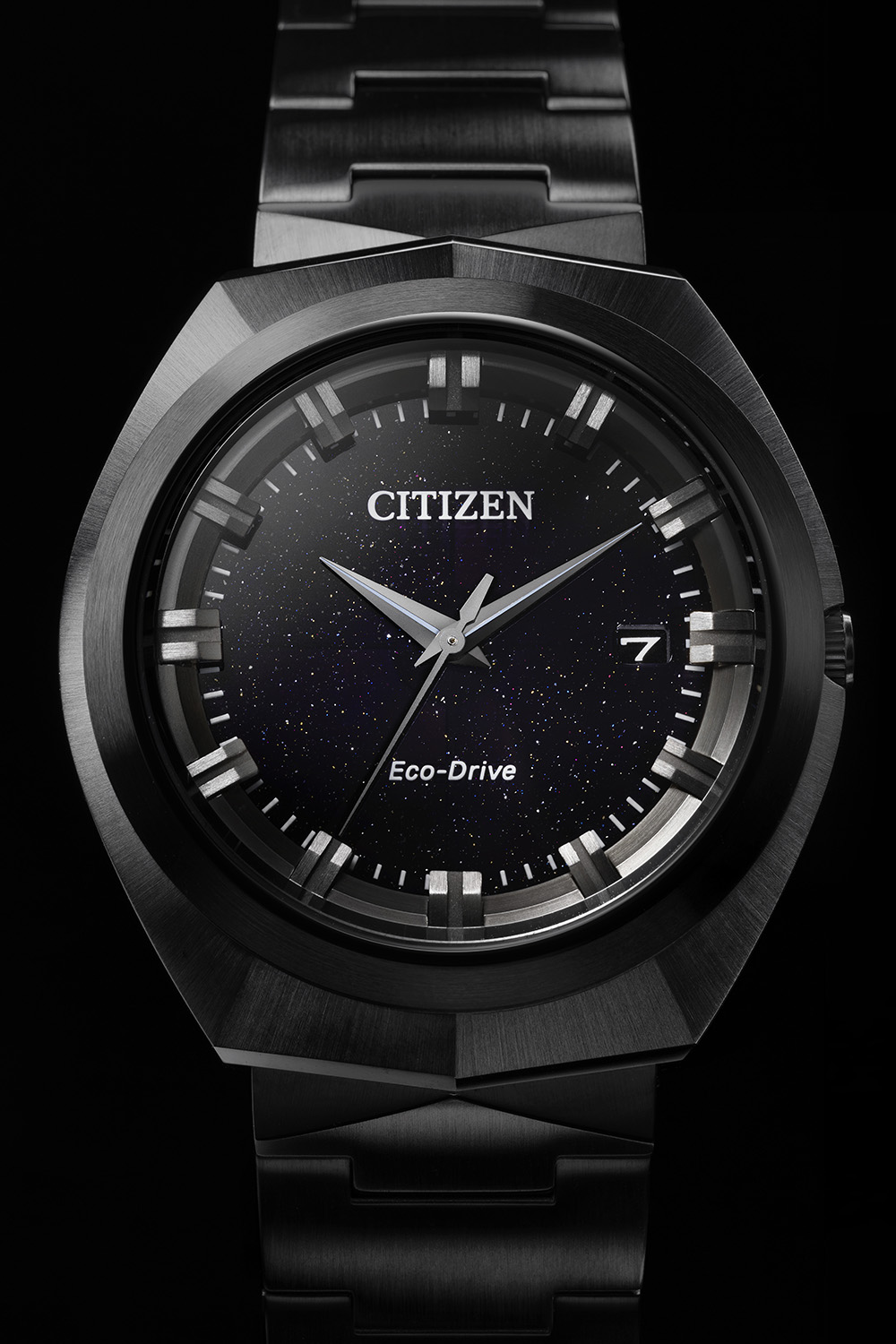
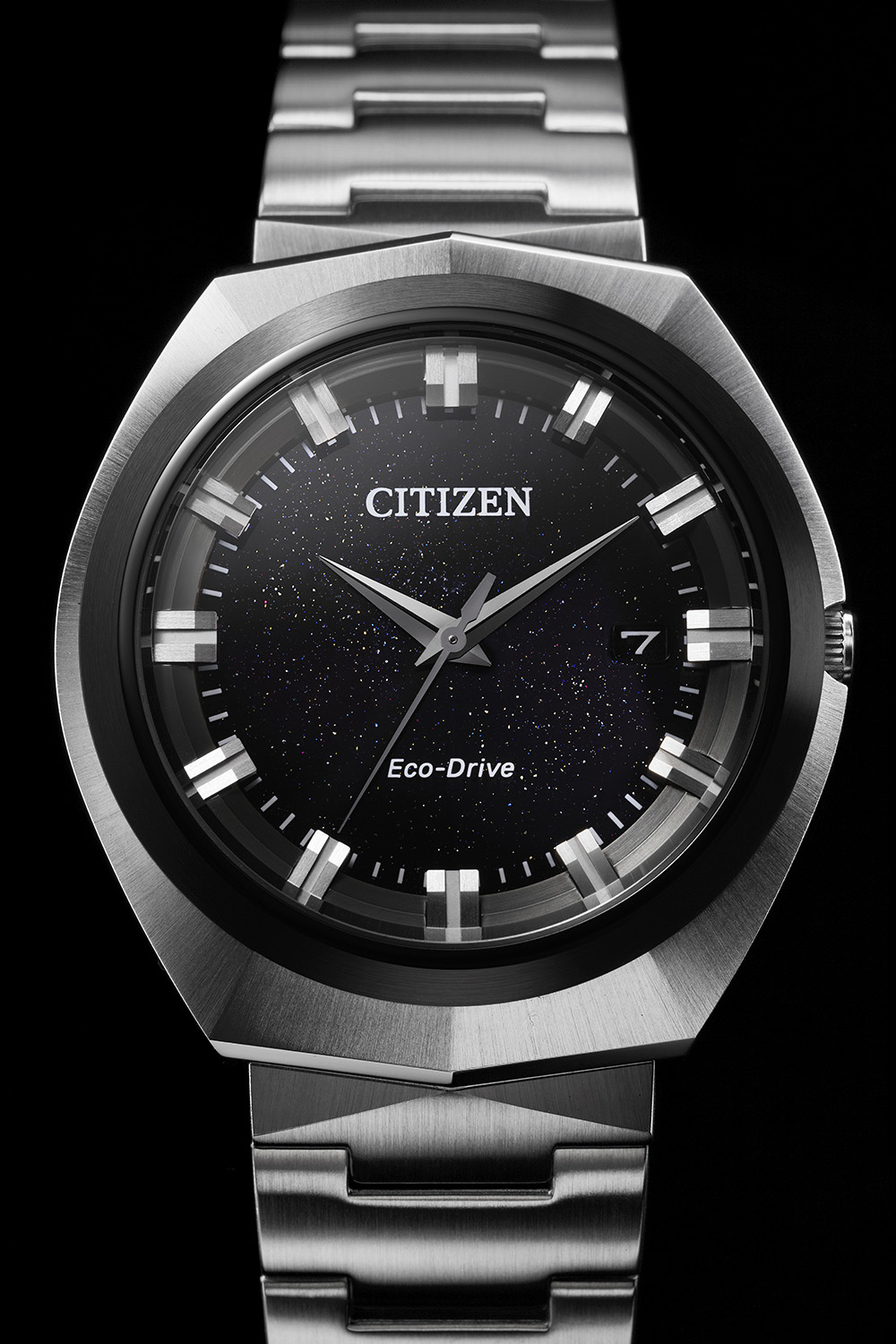


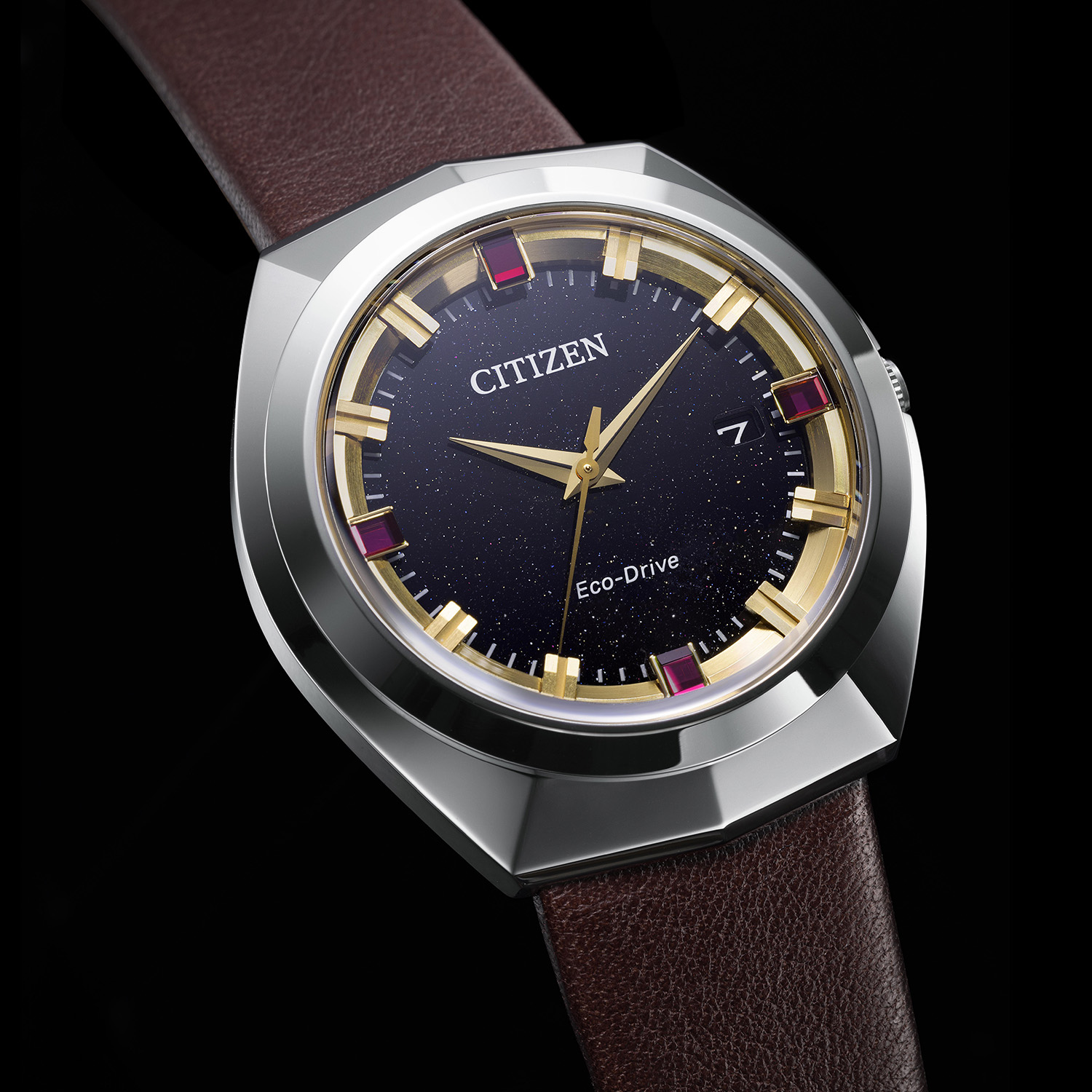


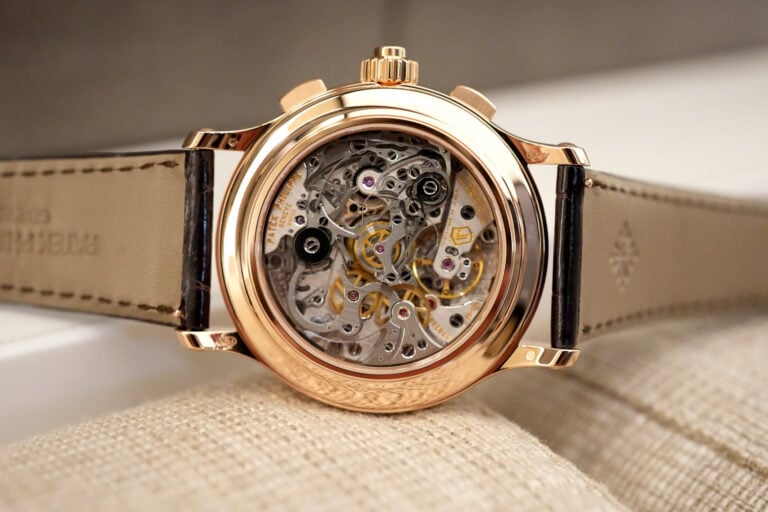
7 responses
Often irritating: announce watch 5-6 months before availability. Damn you Citizen!
42.5 mm is ‘contemporary’ sizing? I’m out.
Can anyone tell me why the limited edition is nearly double of the normal??? What the hell….
Citizen is in LalaLand with their 42mm+ watches
Perfect beauties for wide wrists.
Now, fuss in vain, +-15 a month make Casios of 30 bucks. And Citizen already has calibers that last 2.5 years and up to 7 years with a load like the U70.
Interesting case shape oozing of ‘70s vibe. And the 42.5 mm in diameter is very wearable, considering it doesn’t have lugs, so I expect it would wear smaller. I don’t really like watches smaller than 39mm anyway.
@craig L 42.5mm is contemporary sizing considering there are virtually no lugs. Diameter is a misleading metric, lug-to-lug has to also be taken into account.